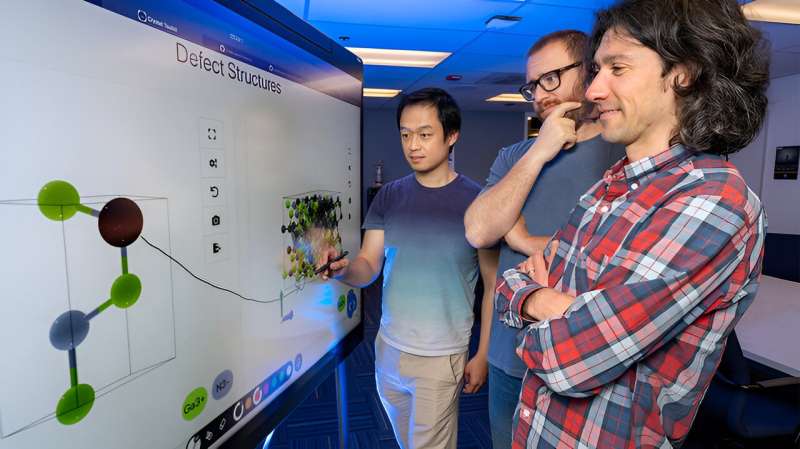Left to right: LLNL researchers Jimmy Shen, Lars Voss and Joel Varley have software that can efficiently and effectively automate and analyze point defects in materials. Credit: Blaise Douros/LLNL
Point defects (e.g. missing, extra or swapped atoms) in crystalline materials often determine the actual electronic and optical response of a given material. For example, controlled substitutions in semiconductors like silicon are the backbone of modern technology. Despite their importance, point defects are notoriously difficult to simulate and characterize, particularly across wide regions of the periodic table.
Researchers at Lawrence Livermore National Laboratory (LLNL) have now created software as part of its open-source software distribution that can efficiently and effectively automate and analyze these types of calculations.
The authors demonstrated the fully automated approach on several technologically important materials. including gallium nitride (the basis of all modern solid-state lighting), gallium oxide (an emerging ultrawideband gap semiconductor) and strontium titanate (a widely studied common mineral), with the work recently published in the Journal of Applied Physics and selected as an Editor’s Pick as part of a special issue on “Defects in Semiconductors.”
“This work has enabled us to look more systematically at different types of defects in materials that exhibit the behavior we have been looking for,” said Lars Voss, a co-author of the work.
“We have been doing these types of calculations by hand for years, but modern advances in high-throughput computing and database software have made this a more practical and flexible approach,” said LLNL scientist Joel Varley, also a contributing author on the paper.
The study and open-source software developed as part of the project has attracted interest from a number of international research teams and industry, the researchers said.
2024-05-24 02:51:02
Source from phys.org
